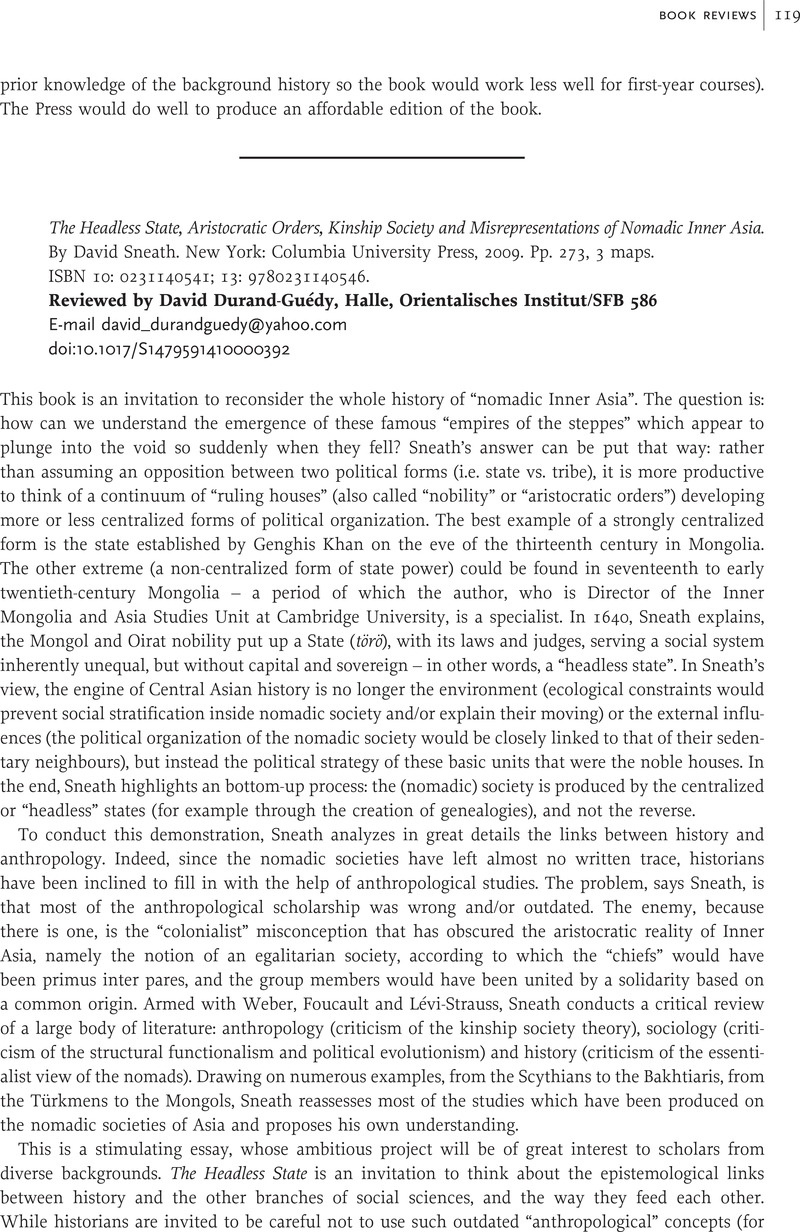No CrossRef data available.
Article contents
The Headless State, Aristocratic Orders, Kinship Society and Misrepresentations of Nomadic Inner Asia. By David Sneath. New York: Columbia University Press, 2009. Pp. 273, 3 maps. ISBN 10: 0231140541; 13: 9780231140546.
Published online by Cambridge University Press: 19 January 2011
Abstract

- Type
- Book Reviews
- Information
- Copyright
- Copyright © Cambridge University Press 2011
References
1 Vladimirstov, B. Y., Social Order of the Mongols: Nomadic Mongol Feudalism (Leningrad: Academy of Science, 1934)Google Scholar; Tolybekov, S., Kochevoe obshcheestvo kazakhov v XVII-nachale XX veka, Politiko-ekonomicheskii analiz (Alma-Alta: Nauka, 1971)Google Scholar; Geiss, P., Pre-Tsarist and Tsarist Central Asia: Communal Commitment and Political Order in Change (London: RoutledgeCurzon, 2003)Google Scholar.
2 J.-P. Digard, “On the Bakhtiari: Comments on ‘Tribes, Confederation and the State’,” and Garthwaite, G., “Tribes, Confederation and the State: An Historical Overview of the Bakhtiari and Iran,” both in Tapper, R. ed., The Conflict of Tribe and State in Iran and Afghanistan (London: Croom Helm, 1983)Google Scholar.
3 Dresch, P., “Segmentation: Its Roots in Arabia and Its Flowering Elsewhere,” Cultural Anthropology 3:1 (1988), pp. 50–67CrossRefGoogle Scholar.
4 Krader, L., Social Organisation of the Mongol-Turkic Pastoral Nomads (The Hague: Mouton and Co., 1963)Google Scholar.
5 Barfield, T., The Perilous Frontier: Nomadic Empires and China (Oxford: Blackwell, 1989)Google Scholar.
6 Digard, J.-P., “Jeux de structures. Segmentarité et pouvoir chez les nomades Baxtyâri d'Iran,” L'homme, vol. 27, no. 102 (1987), pp. 12–53CrossRefGoogle Scholar.
7 Woods, J. E., The Aqqoyunlu: Clan, Confederation, Empire (Minneapolis: Bibliotheca Islamica, 1976)Google Scholar.


